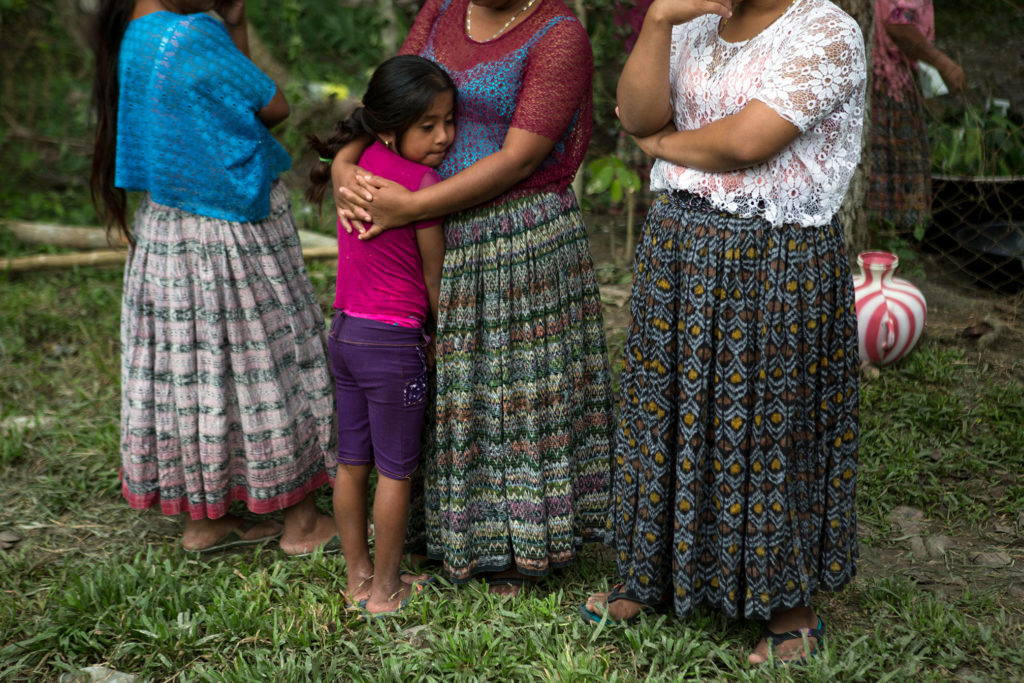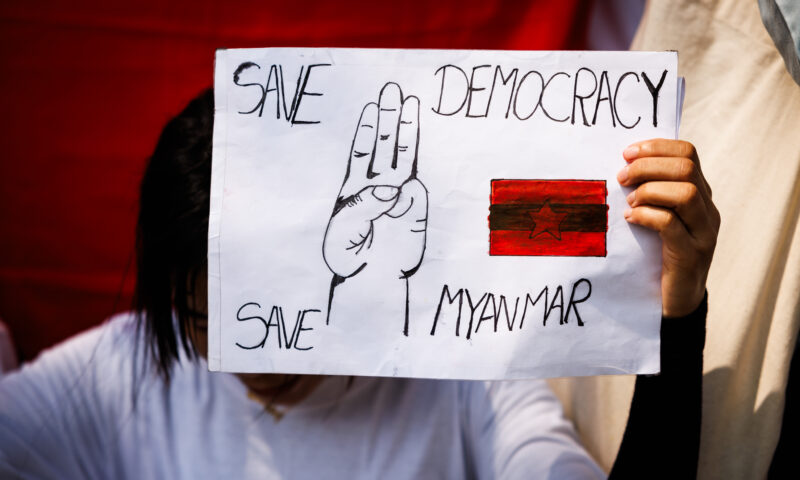Immigration
Indigenous Asylum Seekers Find a Language Wall at the U.S. Border
Immigration activists allege that the CBP’s lack of awareness of indigenous language and culture poses a challenge for adequate medical care and treatment for indigenous migrants from Mexico.

Last December was marked by the deaths of two indigenous migrant children in Customs and Border Protection (CBP) detention at the U.S.-Mexico border. While U.S. immigration officials dispute the causes of death for both children, immigration scholars and advocates say the fatalities point to broader issues facing indigenous language speakers in U.S. custody at the border.
Seven-year-old Jakelin Caal Maquin and her father were among 163 asylum seekers who made it to Antelope Wells, New Mexico after a week of travel. They had journeyed from their hometown of Raxruhá, Guatemala and once at the border were interviewed by Border Patrol agents. The father’s lawyers said agents instructed Nery Gilberto Caal Cuz to sign an English-language form—Caal speaks the Mayan Q’eqchi’ language and limited Spanish—denying that either he or his daughter were ill. The family was detained on the night of Dec. 6; by around 5 a.m. of the next morning Jakelin’s father notified Border Patrol agents she was ill while on a bus to the Lordsburg, New Mexico Border Patrol station. She died on Dec. 8. at Providence Children’s Hospital in El Paso.

Claudia Maquin, 27, poses for a photo holding her brother-in-law’s cell phone that shows an image of her daughter Jakelin Caal, in Raxruha, Guatemala. (AP Photo/Oliver de Ros)
Nearly three weeks later, Felipe Gomez Alonzo, an 8-year-old boy who had reached New Mexico from Yalambojoch, Guatemala with his father who spoke Chuj better than Spanish, died after 155 hours in immigration custody.
A study focused on indigenous language speakers from Mexico found that this group is less likely to receive medical attention than Spanish-speaking migrants.
Jeremy Slack, an assistant geography professor at the University of Texas, El Paso, participated in an academic study conducted between 2010 and 2012 at the U.S.-Mexico border that found 24 percent of indigenous language speakers received medical care while in custody, compared to 36 percent of Spanish-language speakers. The research involved surveying 1,109 recently deported Mexican migrants in Tijuana, Mexicali, Nogales, Ciudad Juárez, Nuevo Laredo and Mexico City.
Mexican migrants surveyed spoke a wide variety of languages including Zapotec, Tzotzil, Nahuatl, Mixtec, Yaqui, K’iche, among other languages. The sheer breadth of languages spoken by indigenous migrants apprehended at the border presents problems because Customs and Border Protection (CBP) is only prepared to communicate in Spanish, says Slack.
“Migrants are speaking in a second language, which is Spanish, while some border patrol agents are also speaking in a second language, which also is Spanish. You see a greater lack of communication and a greater probability for miscommunication.”
Slack said part of the problem lies in how border enforcement views migration from Latin America.
“I think much of border enforcement and much of our asylum refugee systems is predicated on Spanish-speaking Latin Americans. The border patrol still measures all apprehensions as Mexicans and OTMs — ‘other-than-Mexicans,’” said Slack, referring to an official classification used by CBP to document Central American and other migrant groups.
* * *
Recently the CBP has noted a considerable shift in the past two decades from large apprehensions of Mexican migrants to groups from other countries. In the first eight months of 2018 the CBP reported that “other-than-Mexicans” comprised 52 percent of apprehensions on the Southwest border. Immigration expert Slack argues that such framing “doesn’t really provide the nuance for culture understanding of other groups.”
This is tied to an understanding of language as well. More than seven million people in Mexico speak an indigenous language and about 68 indigenous languages are spoken in the country. It is estimated that 40 million people speak an indigenous language in Latin America overall.
“Border patrol [training] is very much geared toward Spanish speakers. It’s the largest employer of Latinos in the federal government in the United States. And there’s an assumption that all border-crossers speak Spanish. So they’re set up to address that.”
* * *
Odilia Romero is the general binational coordinator of Indigenous Front of Binational Organizations (FIOB), an organization focused on indigenous peoples rights, human rights and education programs for indigenous migrant communities. FIOB has trained indigenous language interpreters since 1997.
Most recently the organization put together a group of Mayan interpreters to help the Central American families separated by the Trump administration’s zero tolerance policy. FIOB raised money with the help of Guelaguetza, a local Los Angeles business, to send interpreters to detention facilities in Texas.
Romero alleges that immigration enforcement officers’ racism and their lack of awareness of indigenous language and culture poses a challenge for adequate medical care and treatment for indigenous migrants.

(AP Photo/Oliver de Ros)
“There isn’t a big effort from [government agencies] to provide interpreters because many of these agencies don’t know the language variance and the diversity of indigenous people,” she said. “So they can call and request a Zapotec interpreter now, knowing that there’s hundreds of variants of Zapotec.”
Romero says that the lack of medical care doesn’t happen only at the border. “Once they leave the detention center, they often have to register their kids in schools or have follow-up medical appointments, and they don’t get interpreters in their language. A lot of these institutions don’t know about our existence as indigenous people, and a lot of the Spanish-English interpreters don’t know about our existence or they have a certain racism or prejudice against indigenous people so they don’t pay attention to our needs. That has been seen for the last 30 years here in the U.S., no matter where we go.”
When it comes to border enforcement, Slack says institutional changes are necessary to address the lack of adequate medical care and attention given to indigenous migrants.
“Some of the detention centers I’ve worked with almost immediately release people once they identify that they speak an indigenous language, simply because they’re aware of the logistics of translating or providing materials for them,” said Slack. Hiring more asylum officers onsite and obtaining support from groups and organizations focused on medical care would be key, he said.
“It’s an institutional issue,” Slack added. “There should be policies for how [they] deal with indigenous people.”
Copyright Capital & Main

-

 Locked OutDecember 23, 2025
Locked OutDecember 23, 2025Section 8 Housing Assistance in Jeopardy From Proposed Cuts and Restrictions
-

 Column - State of InequalityDecember 24, 2025
Column - State of InequalityDecember 24, 2025Where Will Gov. Newsom’s Evolution on Health Care Leave Californians?
-

 Latest NewsJanuary 8, 2026
Latest NewsJanuary 8, 2026Why No Charges? Friends, Family of Man Killed by Off-Duty ICE Officer Ask After New Year’s Eve Shooting.
-

 Latest NewsDecember 29, 2025
Latest NewsDecember 29, 2025Editor’s Picks: Capital & Main’s Standout Stories of 2025
-

 Latest NewsDecember 30, 2025
Latest NewsDecember 30, 2025From Fire to ICE: The Year in Video
-

 Column - State of InequalityJanuary 1, 2026
Column - State of InequalityJanuary 1, 2026Still the Golden State?
-

 The SlickJanuary 12, 2026
The SlickJanuary 12, 2026Will an Old Pennsylvania Coal Town Get a Reboot From AI?
-

 Latest NewsJanuary 6, 2026
Latest NewsJanuary 6, 2026In a Time of Extreme Peril, Burmese Journalists Tell Stories From the Shadows

